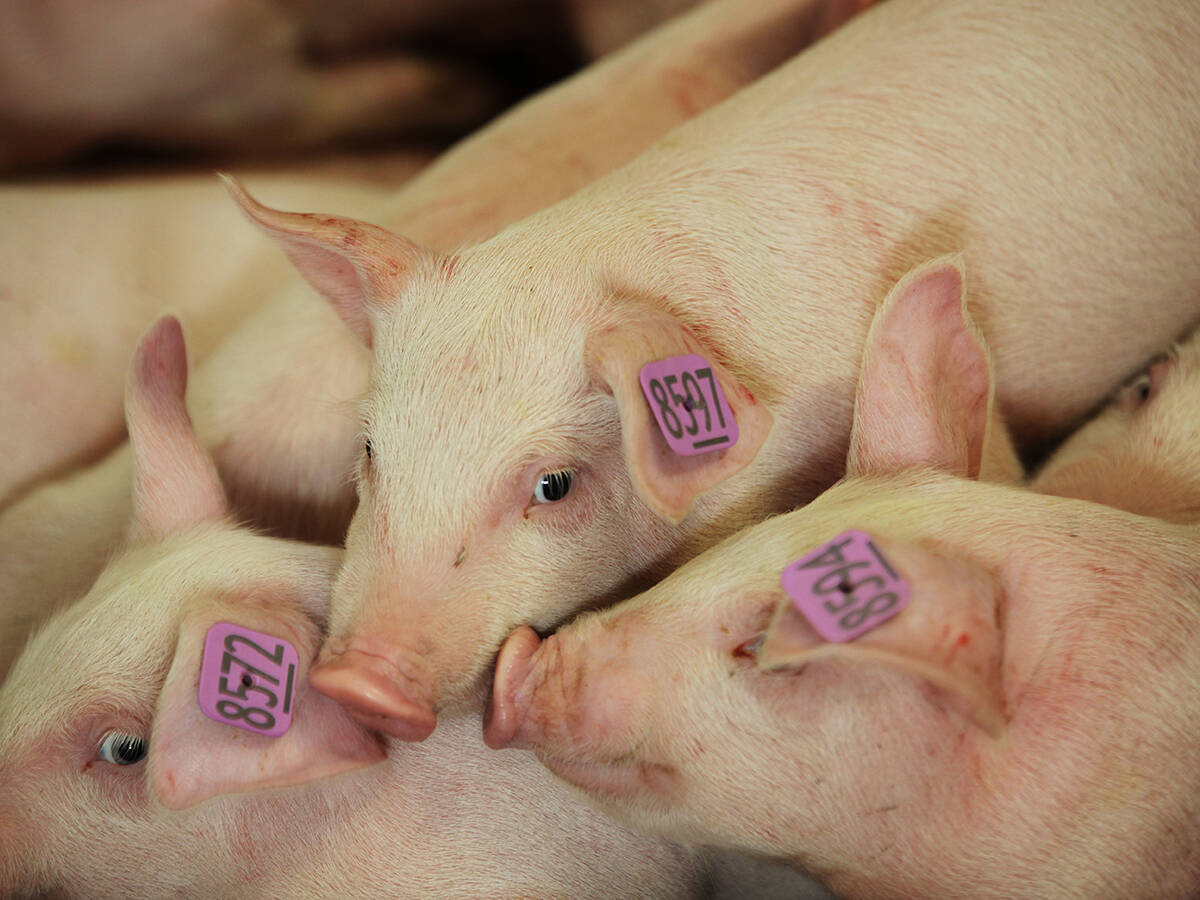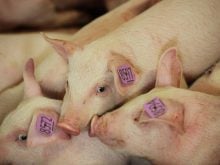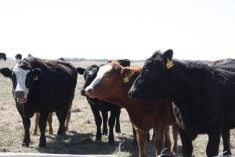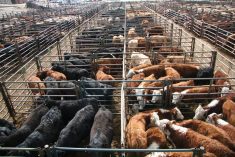INNISFAIL, Alta. – This year’s drought carries the weight of failed
crops and soaring costs for machinery, fuel, utilities, fertilizer and
debt servicing.
“That debt load is a hammer that is going to be coming for the next
couple years on us,” said Alberta Agriculture forage specialist Grant
Lastiwka.
“We can ill afford on farm to run into debt because of loss of income
in a year where you have to borrow more money. You’ll have to recoup
Read Also

The Western Producer Livestock Report – October 16, 2025
Western Producer Livestock Report for October 16, 2025. See U.S. & Canadian hog prices, Canadian bison & lamb market data and sales insights.
someplace else.”
Rod Carlyron, an Alberta Agriculture business development officer, said
high debt loads are threatening fourth- and fifth-generation farms. It
is a year where traditional practices must be set aside, he added.
Alberta Agriculture specialists offered management suggestions at a
recent farm meeting in Innisfail.
Every decision made this year has to be calculated as a partial budget
to identify costs of production. New management techniques are
necessary to carry the farm over the winter and into another potential
drought year.
First, weigh calves and match them to their mothers to see which are
most productive.
Watch feed waste. It is not uncommon to lose 10-12 percent of feed on
the ground. Cows trample it, lie in it and soil it. That waste could
provide another 25 days of feed.
“If you give it to her, she’ll eat it,” said beef specialist Trevor
Yurchak. “If you give her more, it’ll disappear. She may not eat it,
but she is not giving it back.”
Feed cattle in troughs this year and provide 90 centimetres of space
per animal.
“If there (are 60 cm), somebody is not getting enough feed,” Yurchak
said.
Aggressive cows can push heifers out of the way. Mature cows will
receive enough feed, but younger females could starve.
An average cow eats about 15 kilograms of roughage per day, but this
year that could be cut back to 10 kg of dry matter as long as protein,
energy, mineral and vitamin requirements are met.
Pasture planning must start beforehand in anticipation of drought.
People knew they were at risk last May because there was no fall rain
and little snowfall.
“There is a drought somewhere nearly every year,” Lastiwka said.
Forages are costly this year, so hard decisions must be made. That
could mean cutting back on herd size and diligent pasture planning.
Lastiwka suggests using plants such as smooth brome grass or alfalfa,
which have long water-seeking roots. Kentucky bluegrass is common in
central Alberta pastures, but it is not as water efficient as legumes
or native grasses.
Producers must provide more rest for pastures so plants have a chance
to grow taller and send deeper roots in search of moisture.
“Roots are like a savings account,” Lastiwka said.
“If you take off more than 45 percent of the leaf area, it causes slow
root development.”
Nitrogen fertilizer could buy back some of the vigour the plant needs
to survive after this year. Fertilizing in April or fall can open a
field earlier in the spring and encourage a longer growing season.
Moving water troughs forces livestock to spread their manure over a
wider area.
A large amount of nitrogen, phosphorus and potassium leaves animals as
urine and feces. That manure is worth 32 cents a day in fertility, so
it is more economical to move the animals around rather than allowing
them to deposit manure around dugouts and groves of trees.
The growing season is short in a drought. Central Alberta had 60 days
of active growing season this year. The drought hampered tiller
production so growth was poor, but late season rain encouraged regrowth
suitable for fall grazing.

















